The Easiest (and Toughest) Cities to Be a Woman
October 1, 2019 by Sam StebbinsThe fight for women’s equality is one of the most enduring social justice issues in the United States. Many of the goals established in the Women’s Rights Convention in Seneca Falls, New York, over a century and a half ago have since been achieved, including the right to vote. In some states women won the right to vote even before the ratification of the 19th Amendment. Nationwide, however, some of the ideals expressed in the convention have yet to be met.
The median earnings of women working full-time in the United States is $41,453, only about 81% of the median earnings of men. Women are also far less likely than men to work in management positions. Gaps such as these exist despite the fact that today women are more likely to have a college education than men, which should make more women better-qualified for high-paying, leadership roles. This may suggest that deeper, more entrenched issues stand in the way of gender equality.
The gaps along gender lines are not even across the country. In some cities, they are far worse than the average nationwide, while in others, the gap in such measures is very narrow. Using metropolitan area level data from the U.S. Census Bureau’s American Community Survey, 24/7 Wall St. created an index of six measures to identify the 10 best — and 10 worst — cities for women.
Index measures were chosen to reflect both disparities between men and women as well as overall quality of life conditions for women. The measures include: gender pay gap for full-time work, female employment in management roles, bachelor’s degree attainment among women, female life expectancy, uninsured rates, and preschool enrollment.
According to a recent Pew study, American attitudes toward parenting show mothers face far greater pressure than fathers to take on parenting responsibilities. Additionally, about one in every four mothers in the United States are raising children on their own. The demands of parenting can be difficult to balance while pursuing a career, and widely available preschool can make it easier for all parents, and especially for working mothers.
In each of the 10 best cities for women, the share of 3- and 4-year olds enrolled in preschool is greater than the 48.0% share nationwide. Meanwhile, preschool enrollment is lower than average in all but one 10 of the worst cities for women. Here is a state-by-state look at early childhood education programs.
Click here to see the easiest cities for women
Click here to see the toughest cities for women
Click here to read our methodology
The Best Cities for Women

10. Burlington-South Burlington, VT
> Median female earnings: $45,527 (88.6% of male earnings)
> Pct. mgmt. jobs held by women: 44.9%
> Bachelor’s degree attainment: 45.7% (female); 40.0% (male)
> Preschool enrollment: 48.9%
Women working in Burlington, Vermont are far more likely to work in higher-paying, leadership roles than women nationwide. Of all management jobs in the New England metro area, 44.9% are held by women. Meanwhile, nationwide, women work in just 40.3% of management jobs.
The gender pay gap in Burlington is also far smaller than it is nationwide. Across all full-time working women in Burlington, the median income is $45,527, about 89% of the $51,361 median among working men.
[in-text-ad]

9. Boston-Cambridge-Newton, MA-NH
> Median female earnings: $57,201 (81.4% of male earnings)
> Pct. mgmt. jobs held by women: 43.5%
> Bachelor’s degree attainment: 47.9% (female); 47.2% (male)
> Preschool enrollment: 58.6%
Strong preschool enrollment indicates that more parents, mothers in particular, are able to hold a job and pursue a career while still balancing parenting responsibilities. In Boston, Massachusetts, 58.6% of 3- and 4-year olds are enrolled in preschool, one of the larger shares of any U.S. metro area.
A college degree can lead to higher-paying career opportunities and increased financial independence. In Boston, 47.9% of women have a bachelor’s degree or higher, also one of the larger shares of any metro area in the country and higher than the 47.2% bachelor’s degree attainment rate among men in the area.

8. Missoula, MT
> Median female earnings: $38,083 (102.9% of male earnings)
> Pct. mgmt. jobs held by women: 43.7%
> Bachelor’s degree attainment: 46.8% (female); 45.2% (male)
> Preschool enrollment: 54.1%
Nationwide, women working full-time earn only about 81 cents for every dollar men earn. Missoula, however, is one of four metropolitan areas in the U.S. where women typically earn more than men. The median annual income among women in the Montana metro area is $38,038, slightly higher than the $37,061 median among men.
The higher incomes for women are likely partially attributable to education levels. Incomes tend to increase with educational attainment, and in Missoula, 46.8% of women have a bachelor’s degree or higher, compared to 45.2% of men.

7. Ann Arbor, MI
> Median female earnings: $48,252 (78.9% of male earnings)
> Pct. mgmt. jobs held by women: 42.8%
> Bachelor’s degree attainment: 55.5% (female); 53.4% (male)
> Preschool enrollment: 63.0%
Of the 10 metro areas on this list, Ann Arbor has the widest gender pay gap. Women in full-time, year-round positions in the metro area earn on average 78.9% of men’s earnings, which is slightly worse than the national gap of 80.8%. However, the metropolitan area makes up for this by having among the best outcomes for women overall compared to women nationwide.
The metro area has the second highest college attainment rate among women, at 55.5%. The metro area also has high life expectancy for women and a very high preschool enrollment rate. Women working full-time, year-round in Ann-Arbor earn a median of $48,252, which is about $6,800 higher than the median for women nationwide and one of the highest in the country.
[in-text-ad-2]

6. Portland-South Portland, ME
> Median female earnings: $45,288 (85.4% of male earnings)
> Pct. mgmt. jobs held by women: 46.7%
> Bachelor’s degree attainment: 43.7% (female); 37.0% (male)
> Preschool enrollment: 63.5%
The typical woman working full-time in Portland, Maine earns 85 cents for every dollar the typical male earns in the metropolitan area, a smaller gap than national gender pay gap of 81 cents on the dollar.
Women in Portland are also more likely to have a college education and be employed in higher-paying leadership positions than women nationwide on average. In the metro area, women hold 46.7% of all management positions compared to 40.3% of those jobs nationwide, and 43.7% of women have a bachelor’s degree or higher, compared to 32.6% of women nationwide.

5. Charlottesville, VA
> Median female earnings: $46,007 (86.9% of male earnings)
> Pct. mgmt. jobs held by women: 46.2%
> Bachelor’s degree attainment: 47.7% (female); 44.0% (male)
> Preschool enrollment: 65.2%
In Charlottesville, Virginia women hold over 46% of management positions, a more equal distribution than in the vast majority of metro areas nationwide. Strong preschool enrollment rates in the metro area make it easier for working mothers to balance responsibilities of career and family. In Charlottesville, 65.2% of 3- and 4-year olds are in a preschool program, well above the 40.3% national enrollment rate.
Higher educational attainment is one of the best ways to expand career opportunities and work in a secure, high-paying field. In Charlottesville, 47.7% of women have a bachelor’s degree or higher, compared to just 32.6% of women nationwide.
[in-text-ad]

4. San Francisco-Oakland-Hayward, CA
> Median female earnings: $63,306 (82.8% of male earnings)
> Pct. mgmt. jobs held by women: 42.1%
> Bachelor’s degree attainment: 49.5% (female); 49.1% (male)
> Preschool enrollment: 60.2%
Women in the San Francisco metro area typically earn about 83% of what men earn in a year, only slightly better than the 81% national gender pay gap. However, the $63,306 median earnings for women working full-time in the bay area is the highest of any major metro area nationwide.
Strong preschool enrollment indicates that more parents, mothers in particular, are able to hold a job and pursue a career while still balancing parenting responsibilities. In San Francisco, 60.3% of 3- and 4-year olds are enrolled in preschool, one of the larger shares of any U.S. metro area.

3. Santa Fe, NM
> Median female earnings: $41,563 (94.6% of male earnings)
> Pct. mgmt. jobs held by women: 46.9%
> Bachelor’s degree attainment: 41.5% (female); 39.1% (male)
> Preschool enrollment: 62.5%
Incomes tend to rise with educational attainment, and in Sante Fe, New Mexico, 41.5% of adult women have a bachelor’s degree or higher, a larger share than the 39.1% of men. The higher educational attainment of women in the metro area may explain the smaller than typical gender pay gap. The median income among women working full-time in Santa Fe is $41,563, about 95% of what the typical full-time working man earns in the metro area. Nationwide, the typical woman working full-time earns $41,453, about 81% of the median income among men working full-time.
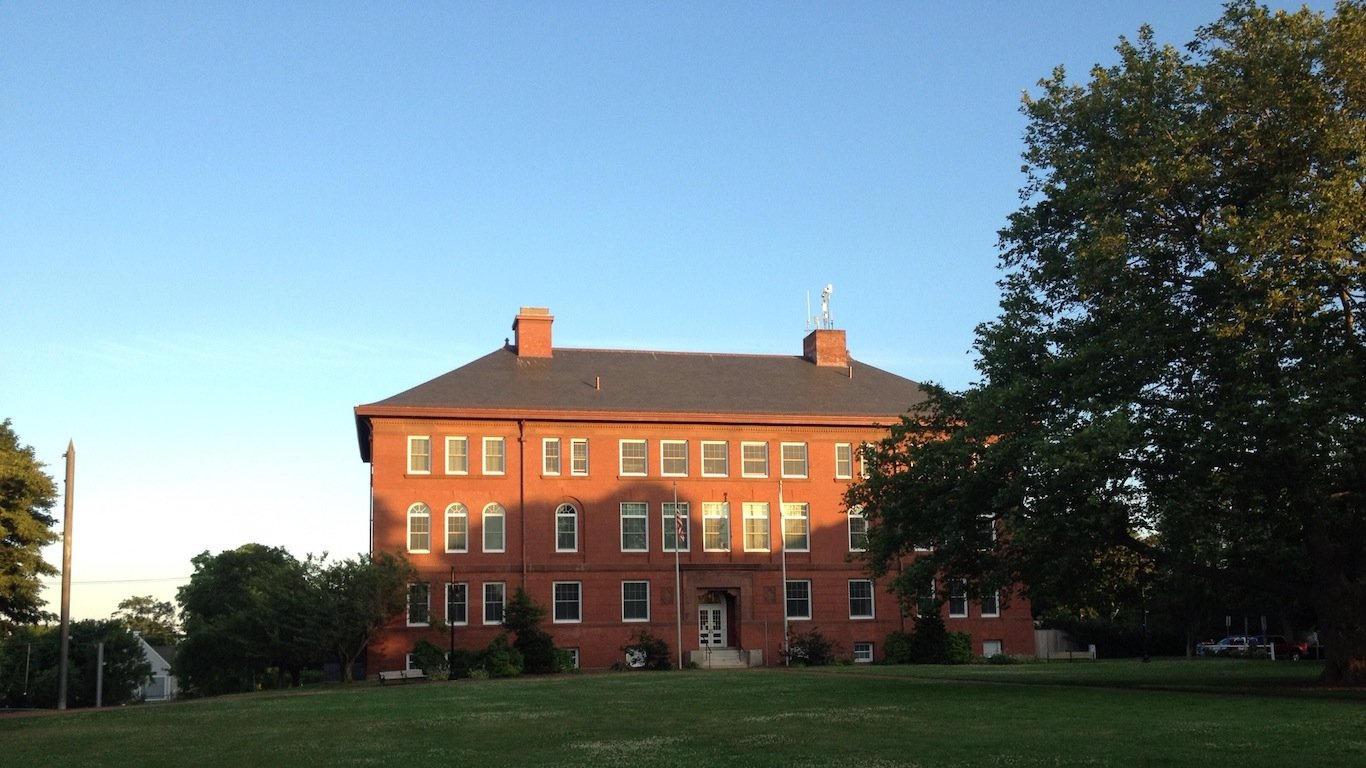
2. Barnstable Town, MA
> Median female earnings: $51,631 (97.1% of male earnings)
> Pct. mgmt. jobs held by women: 47.3%
> Bachelor’s degree attainment: 46.1% (female); 42.9% (male)
> Preschool enrollment: 57.5%
The metro area around Barnstable Town, Massachusetts metro area, which comprises all of Cape Cod, is closer to gender equality than the vast majority of metro areas nationwide. Women hold slightly more than 47% of all jobs in management in the metro area, one of the largest shares in the country and considerably higher than the comparable 40.3% share nationwide.
The nearly even employment in management positions — which tend to be higher paying — may partially explain the nearly nonexistent gender pay gap in Barnstable Town. The median annual income among women working full-time in the metro area is $51,631, almost as much as the median income of $53,157 among men in the area.
[in-text-ad-2]

1. Ithaca, NY
> Median female earnings: $44,572 (87.9% of male earnings)
> Pct. mgmt. jobs held by women: 55.8%
> Bachelor’s degree attainment: 52.7% (female); 51.5% (male)
> Preschool enrollment: 76.8%
Ithaca, New York, ranks as the best metro area for women due both to the city having a relatively small gender pay gap and generally positive outcomes for women. While roughly one-third of women in the United States have a bachelor’s degree, 52.7% of women in Ithaca do, the third highest share among metro areas. Ithaca also has the fourth highest share of women in management occupations and the second highest preschool enrollment rate, at 76.8% of 3- and 4-year olds, compared to 48.0% of preschool-aged children nationwide.
Also, 55.2% of computer, engineering, and science occupations — all of which women have historically been all but excluded from — in the Ithaca metro area are held by women, the highest share of any metro area and more than double the national share.
The Worst Cities for Women
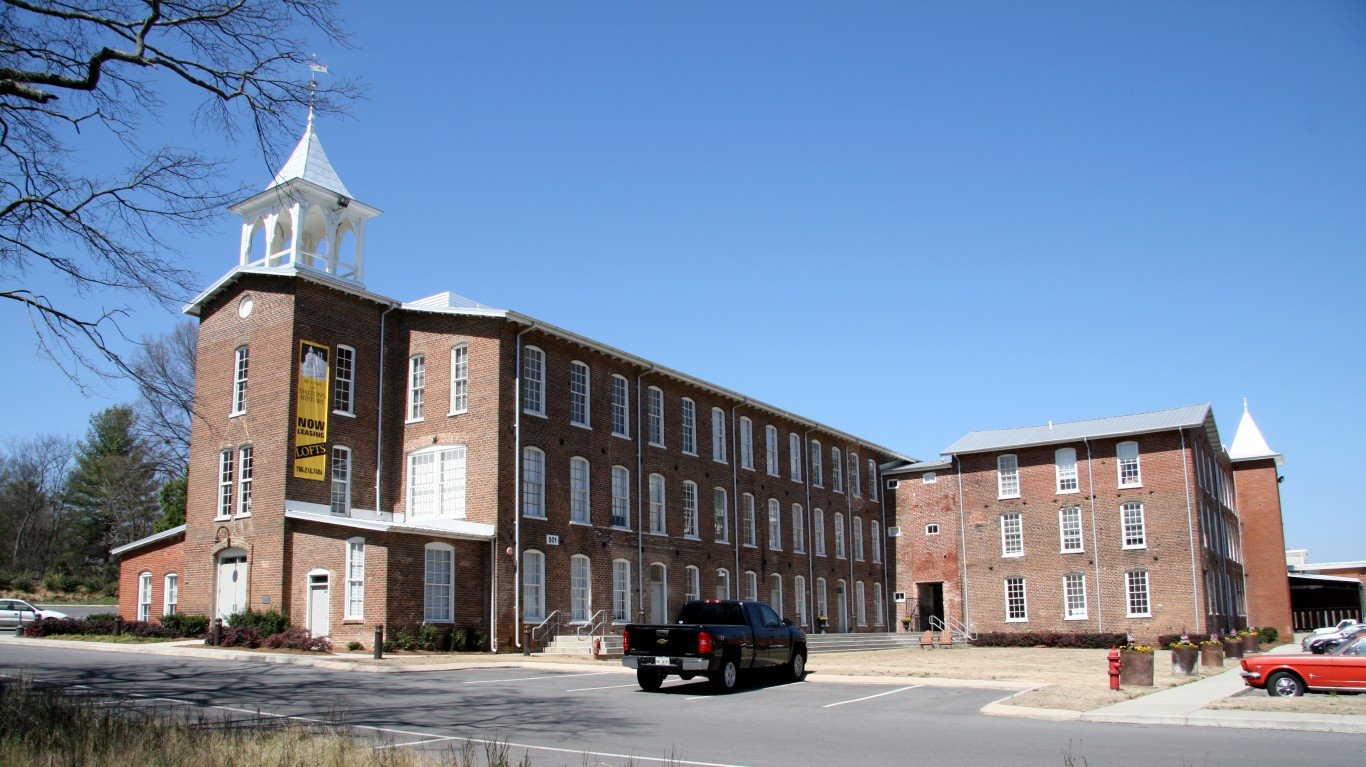
10. Dalton, GA
> Median female earnings: $32,668 (95.4% of male earnings)
> Pct. mgmt. jobs held by women: 40.1%
> Bachelor’s degree attainment: 14.5% (female); 12.5% (male)
> Preschool enrollment: 24.3%
24/7 Wall St. ranked the cities for this piece based on both the gap between men and women in certain measures and the overall quality of life for women in these areas. The Dalton, Georgia, metro actually ranks relatively well based on the gender gap in the workplace. Women earn 95% on average compared to men in full-time, year-round positions in the metro area, one of the smallest gaps in the country.
However, based on overall outcomes for women, Dalton ranks very poorly compared to women’s outcomes nationwide. In Dalton, just 14.5% of women 25 or older hold a bachelor’s degree, the third lowest share of any metro area in the country, although slightly higher than the 12.5% share of males with a bachelor’s degree there. Dalton has a relatively low median annual wage for women as well as low life expectancy and one of the lowest preschool enrollment rates in the country.
[in-text-ad]
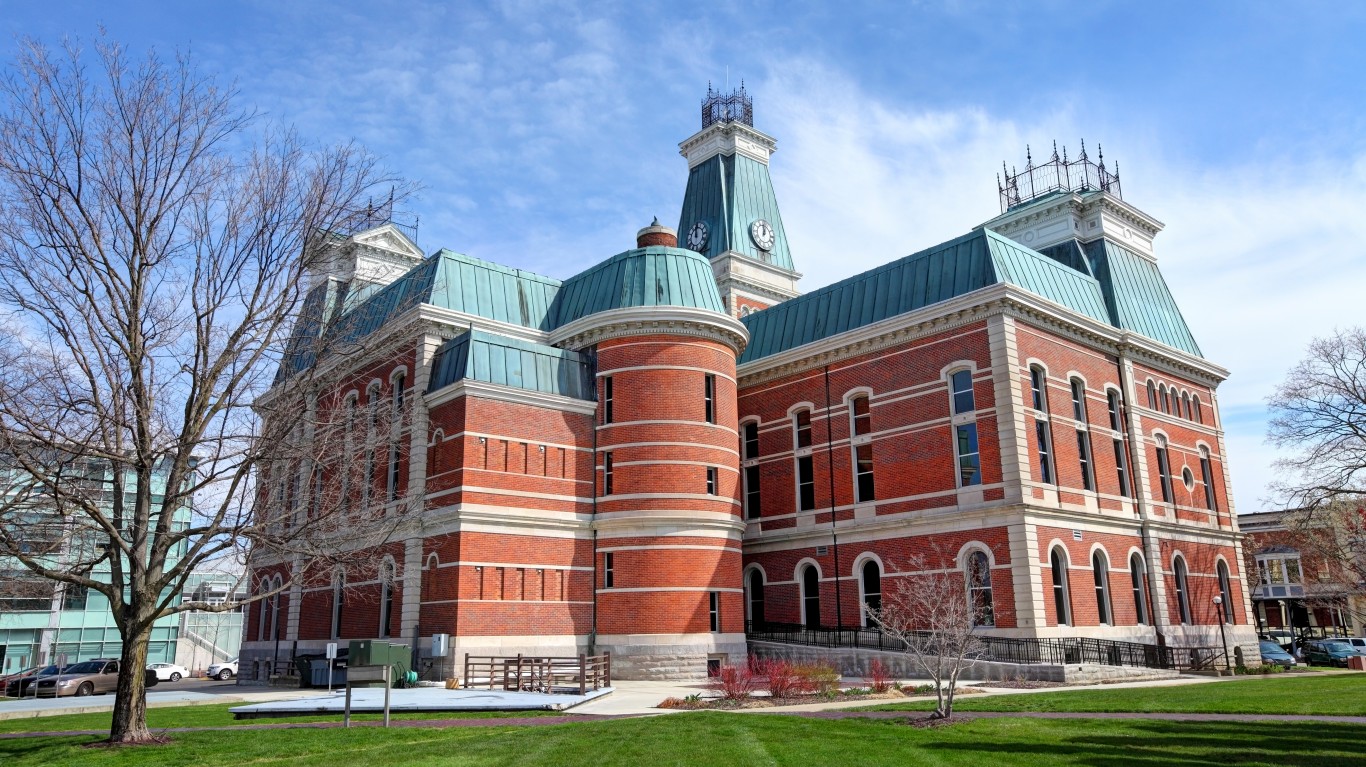
9. Columbus, IN
> Median female earnings: $37,967 (70.4% of male earnings)
> Pct. mgmt. jobs held by women: 24.5%
> Bachelor’s degree attainment: 35.0% (female); 35.3% (male)
> Preschool enrollment: 25.2%
Women have traditionally been all but excluded from executive positions, and today they are still underrepresented, holding about 40% of all management occupations nationwide. In Columbus, the ratio is much worse, with under 25% of management occupations held by women. It is one of just five metro areas in the United States where that is the case.
The lack of representation in better-paying jobs can help explain the gender pay gap, although studies have shown that even in the same roles, women tend to be paid less. Whichever is the primary reason in this metro area, Columbus has one of the worst gender pay gaps in the country — female workers make only about 70% of what male workers do, compared to the national pay gap of 81%.
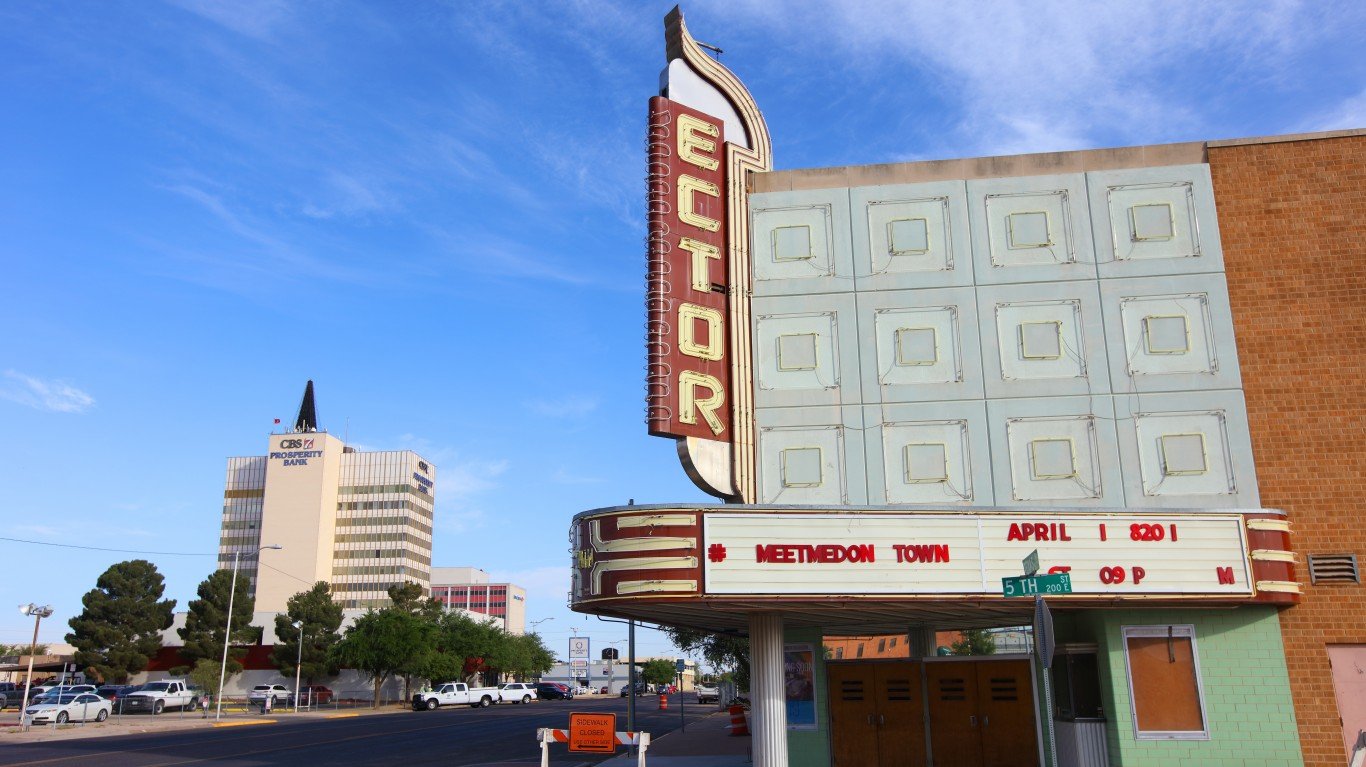
8. Odessa, TX
> Median female earnings: $35,685 (70.7% of male earnings)
> Pct. mgmt. jobs held by women: 27.4%
> Bachelor’s degree attainment: 15.9% (female); 11.8% (male)
> Preschool enrollment: 54.7%
Women have traditionally been excluded from higher-paying management positions, and despite some progress still only hold 40% of all management roles nationwide. In Odessa, the ratio is even worse, with just 27.4% of all management occupations held by women, the second lowest share among metro areas in the state, and one of the 10 worst shares among U.S. metro areas.
Life expectancy at birth among women in Odessa is just 77.9 years, one of the lowest among U.S. metro areas and almost three years less than the national life expectancy figure for women.
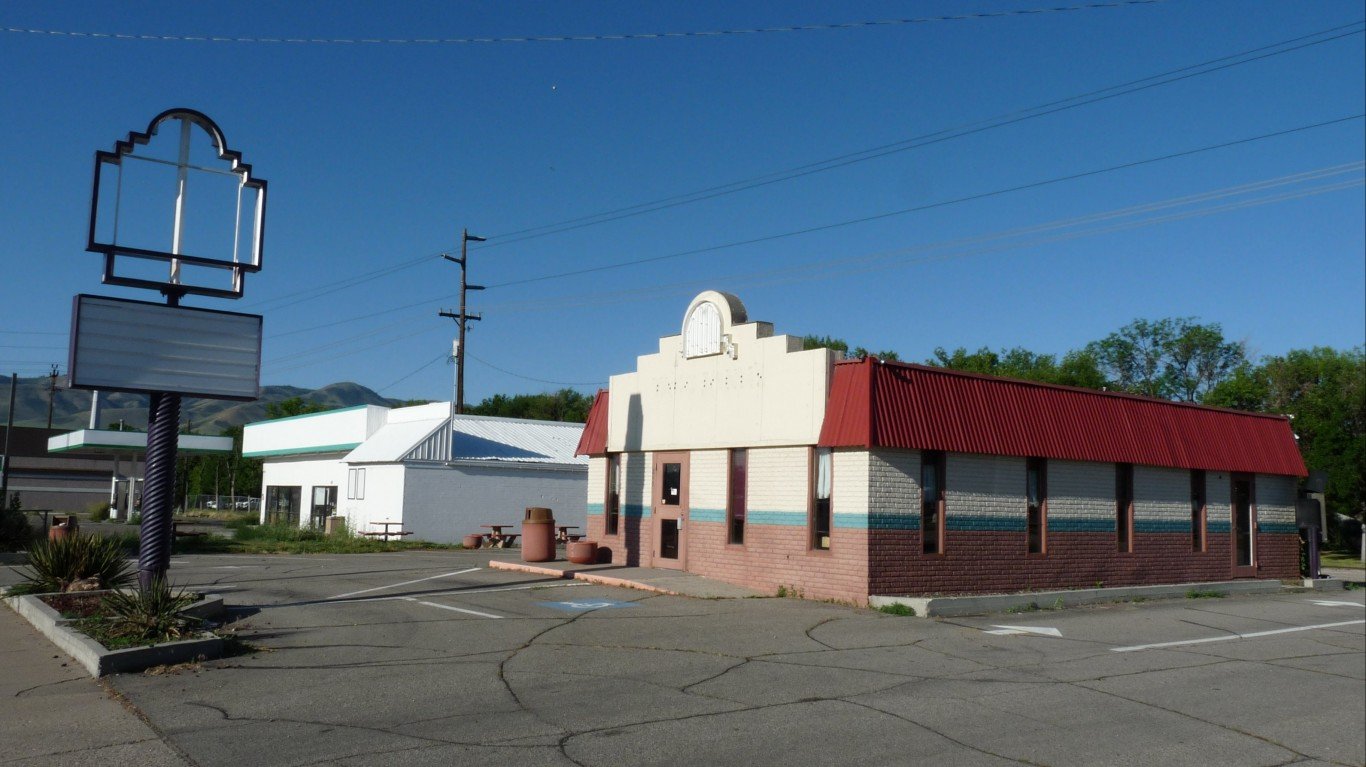
7. Pocatello, ID
> Median female earnings: $34,292 (67.7% of male earnings)
> Pct. mgmt. jobs held by women: 31.5%
> Bachelor’s degree attainment: 30.6% (female); 28.5% (male)
> Preschool enrollment: 13.5%
Mothers are disproportionately the ones who assume responsibility for the care of young children. In addition to being instrumental in childhood development, pre-K programs give parents — and primarily women — the opportunity to work outside the home or otherwise lead their lives. Idaho is one of only four states that does not fund preschool. In Pocatello, just 13.5% of 3- and 4-year olds are enrolled in early education, one of the lowest shares in the country and well below the 48.0% national share.
Pocatello also has one of the worst gender pay gaps among metro areas. Female workers in the area earn just 67.7% of what men earn in Pocatello, on average.
[in-text-ad-2]

6. Lake Havasu City-Kingman, AZ
> Median female earnings: $35,220 (92.3% of male earnings)
> Pct. mgmt. jobs held by women: 47.5%
> Bachelor’s degree attainment: 12.9% (female); 14.1% (male)
> Preschool enrollment: 32.6%
24/7 Wall St. ranked the cities for this piece based on both the gap between men and women in certain measures and the overall quality of life for women in these areas. The Lake Havasu, Arizona, metro area stands out, along with Dalton, Georgia, as a metro area that ranks low based on quality of life measure but actually ranks well based on the gender gap. In fact, women in Lake Havasu earn annual wages equal to 92.3% of median male earnings in the metro area — one of the better gaps among U.S. cities.
Unfortunately for women in the metro area, while the gap is relatively small, outcomes for both women and men are quite poor. Just 12.9% of female adults have a bachelor’s degree, the smallest share of any U.S. metro area. The metro area also has among the lowest preschool enrollment rates and below average median female earnings.
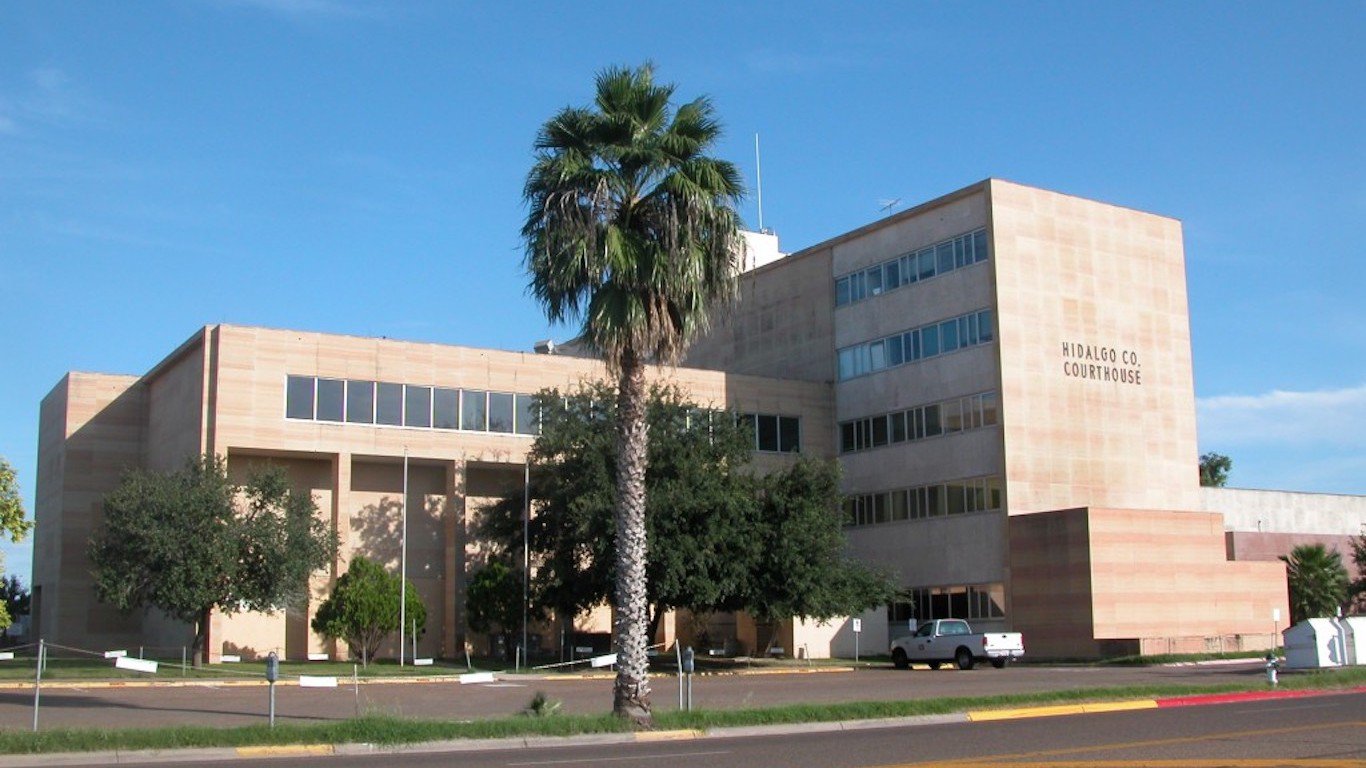
5. McAllen-Edinburg-Mission, TX
> Median female earnings: $27,207 (77.2% of male earnings)
> Pct. mgmt. jobs held by women: 40.3%
> Bachelor’s degree attainment: 20.4% (female); 16.8% (male)
> Preschool enrollment: 33.9%
Women in the McAllen-Edinburg-Mission, Texas metro area earn less than those in every other metropolitan area in the country. The typical female worker in the south Texas metro area earns just $27,207 a year, well below the median income of $41,453 among women nationwide. These low incomes of women in the area persist despite the 20.4% bachelor’s degree attainment rate among women, which is well above the 16.8% rate among men in the area.
[in-text-ad]

4. Albany, OR
> Median female earnings: $34,170 (72.1% of male earnings)
> Pct. mgmt. jobs held by women: 34.0%
> Bachelor’s degree attainment: 21.7% (female); 12.8% (male)
> Preschool enrollment: 13.3%
Incomes tend to rise with educational attainment, and in Albany, Oregon, women are much more likely to have gone to college than men. The bachelor’s degree attainment rate among women in Albany is 21.7% — nearly double the 12.8% rate among men. Despite greater educational attainment, the median income among area women in the metro area is just $34,170, well below the median earnings of $47,373 among men in Albany.
Low preschool enrollment in an area can suggest that more mothers are sacrificing work and career opportunities to raise children. In Albany, just 13.3% of 3- and 4-year olds are enrolled in preschool, nearly the smallest share of any U.S. metro area and well below the 48.0% national enrollment rate.
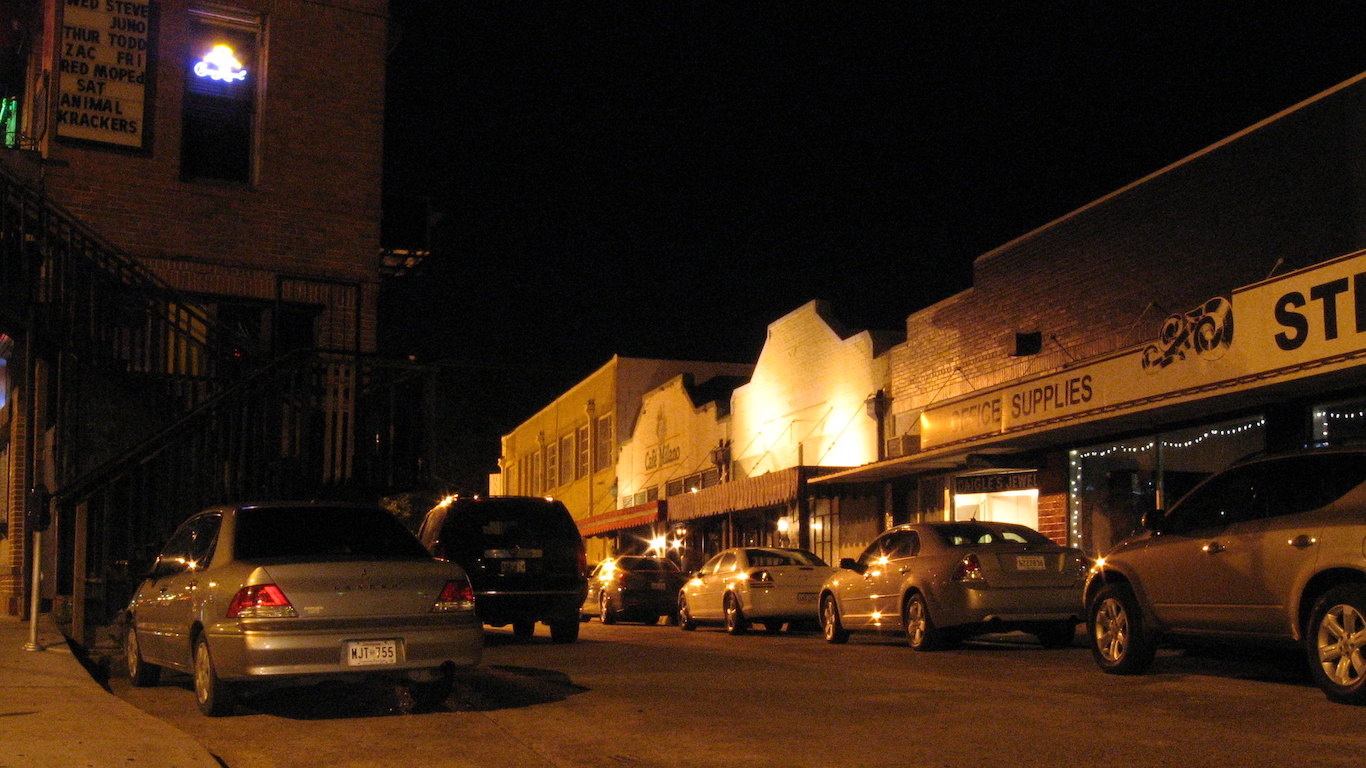
3. Houma-Thibodaux, LA
> Median female earnings: $32,214 (56.6% of male earnings)
> Pct. mgmt. jobs held by women: 33.0%
> Bachelor’s degree attainment: 19.9% (female); 11.8% (male)
> Preschool enrollment: 39.2%
The gender pay gap is more pronounced in Houma-Thibodaux than in any other metro area in the United States. The median earnings among women in the metro area is just $32,214 annually, only 56.6% of the median earnings of $56,934 among men in the area.
The stark gender gap in earnings is attributable in part to the relative lack of women in high-paying, leadership roles in the metro area. For example, women fill just 33.0% of all management jobs in Houma-Thibodaux. Nationwide, 40.3% of management positions are held by women.
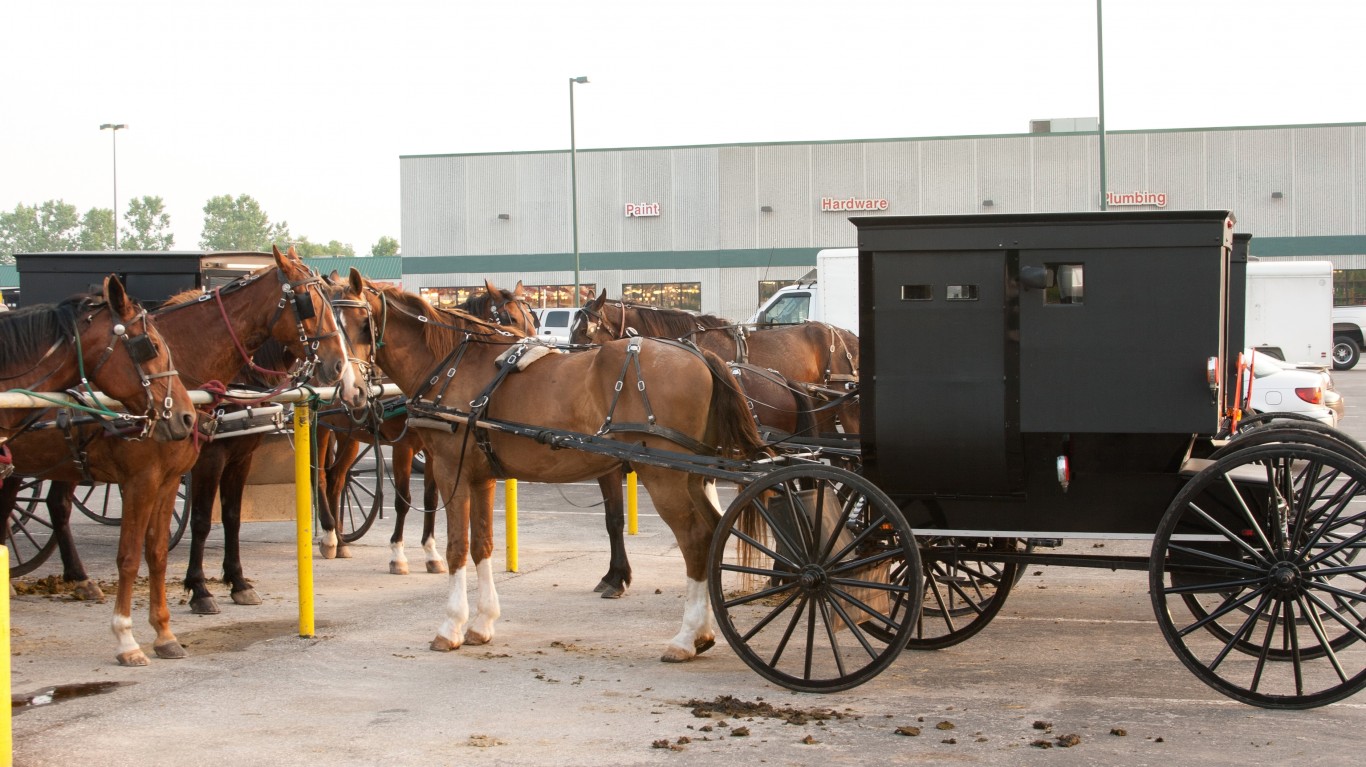
2. Elkhart-Goshen, IN
> Median female earnings: $34,370 (66.3% of male earnings)
> Pct. mgmt. jobs held by women: 23.1%
> Bachelor’s degree attainment: 19.6% (female); 20.9% (male)
> Preschool enrollment: 32.8%
Elkhart-Goshen is one of only two metro areas in the Midwest to rank among the worst for women. A strong preschool program can make it easier for single mothers and working families to manage careers and child rearing. In the Elkhart metro area, less than a third of 3- and 4-year olds are enrolled in preschool, compared to nearly half of all 3- and 4-year olds nationwide.
Disparities between men and women in Elkhart are especially pronounced in the workforce. For example, the median annual income among area women is just $34,370, well below the median earnings of $51,805 among men. Additionally, less than 25% of management positions in the metro area are held by women, compared to 40.3% nationwide.
[in-text-ad-2]
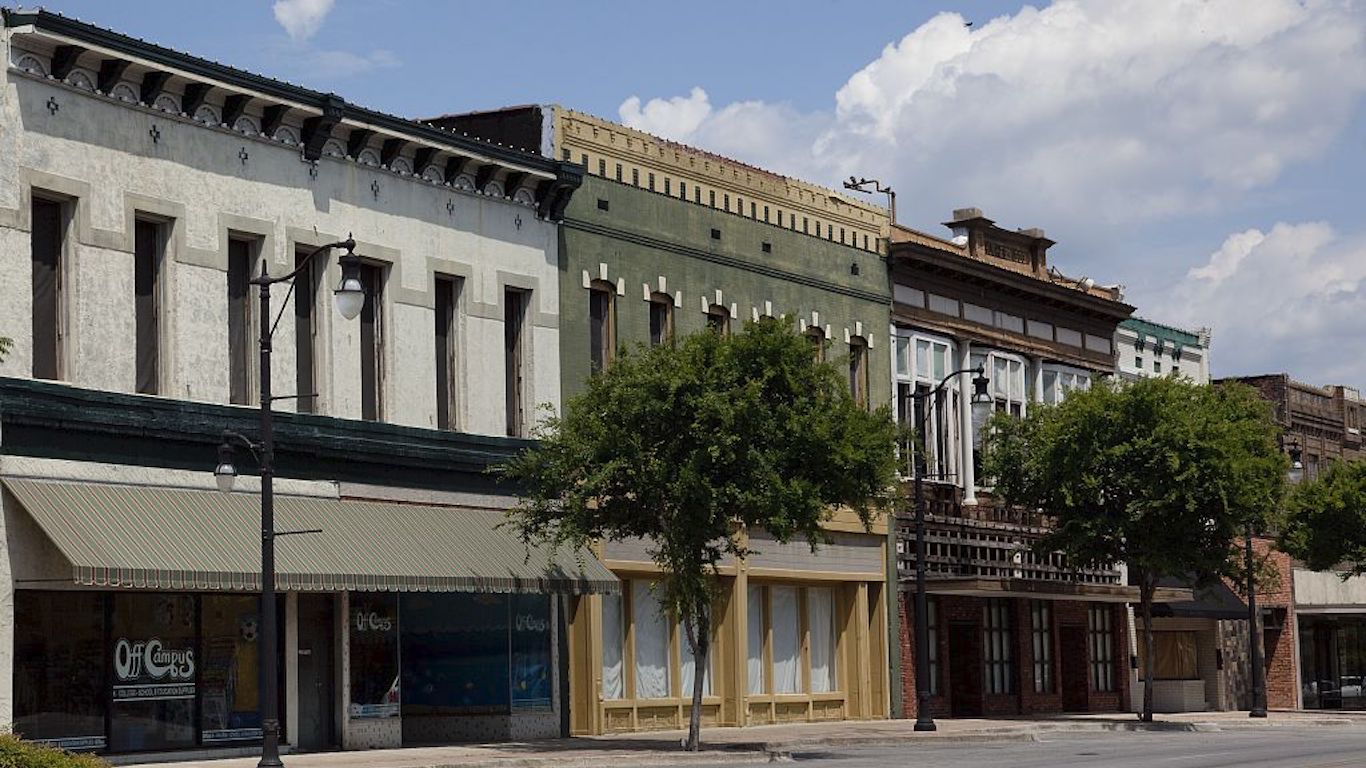
1. Gadsden, AL
> Median female earnings: $31,188 (71.0% of male earnings)
> Pct. mgmt. jobs held by women: 29.8%
> Bachelor’s degree attainment: 22.0% (female); 16.3% (male)
> Preschool enrollment: 35.8%
Americans with a college education are qualified for a greater number of high-paying jobs, and as a result, incomes tend to rise with educational attainment. In Gadsden, 22.0% of women age 25 and over have a bachelor’s degree, a considerably larger share than the 16.3% bachelor’s degree attainment rate among men in the metro area. Still, the gender pay gap in Gadsden is among the worst in the nation, with women earning just 71.0% of the median annual income of $43,922 among men. Gadsden, Alabama, is one of five metro areas in the South to rank among the worst cities for women.
Methodology
To identify the best and worst U.S. metro areas for women, 24/7 Wall St. created a six part index consisting of measures of income, educational attainment, health, and access to childcare.
The index includes median female earnings as a percent of median male earnings for full-time year-round workers, the share of women with at least a bachelor’s degree, the share of management positions held by women, the share of 3- and 4-year olds enrolled in preschool, the uninsured rate among women aged 64 and under, and female life expectancy.
Life expectancy came from the Institute for Health Metrics and Evaluation, an independent health research center affiliated with the University of Washington. All other measures are based on one-year estimates from the U.S. Census Bureau’s American Community Survey for 2017.
Take This Retirement Quiz To Get Matched With A Financial Advisor (Sponsored)
Take the quiz below to get matched with a financial advisor today.
Each advisor has been vetted by SmartAsset and is held to a fiduciary standard to act in your best interests.
Here’s how it works:
1. Answer SmartAsset advisor match quiz
2. Review your pre-screened matches at your leisure. Check out the
advisors’ profiles.
3. Speak with advisors at no cost to you. Have an introductory call on the phone or introduction in person and choose whom to work with in the future
Take the retirement quiz right here.
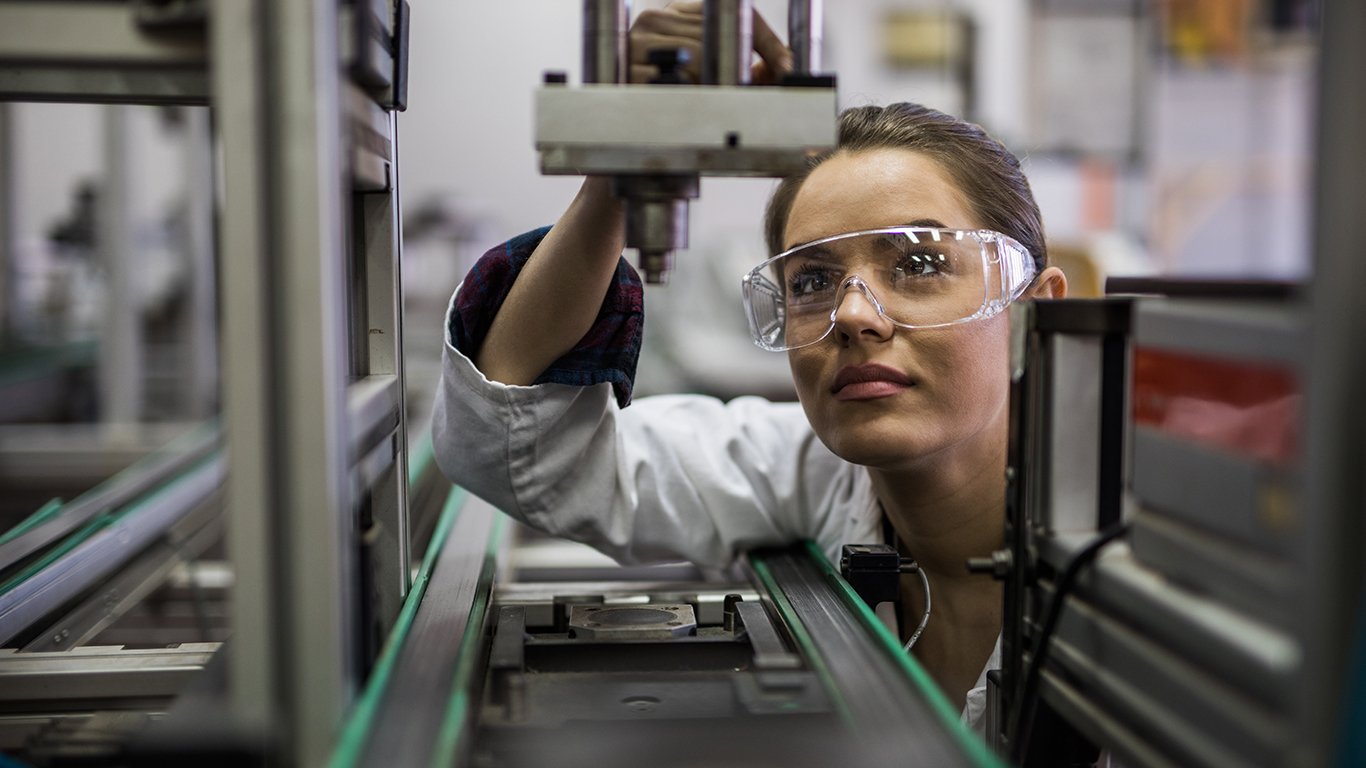 24/7 Wall St.
24/7 Wall St.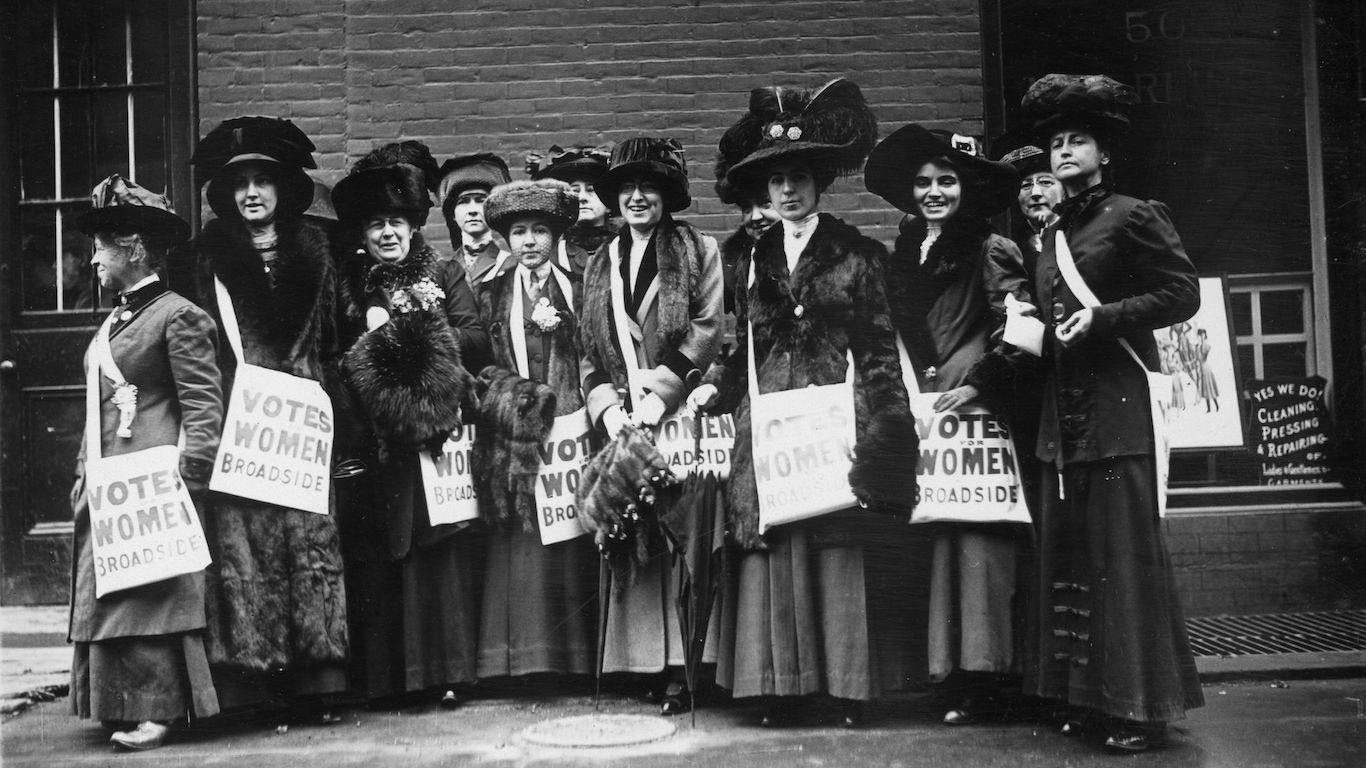 24/7 Wall St.
24/7 Wall St.